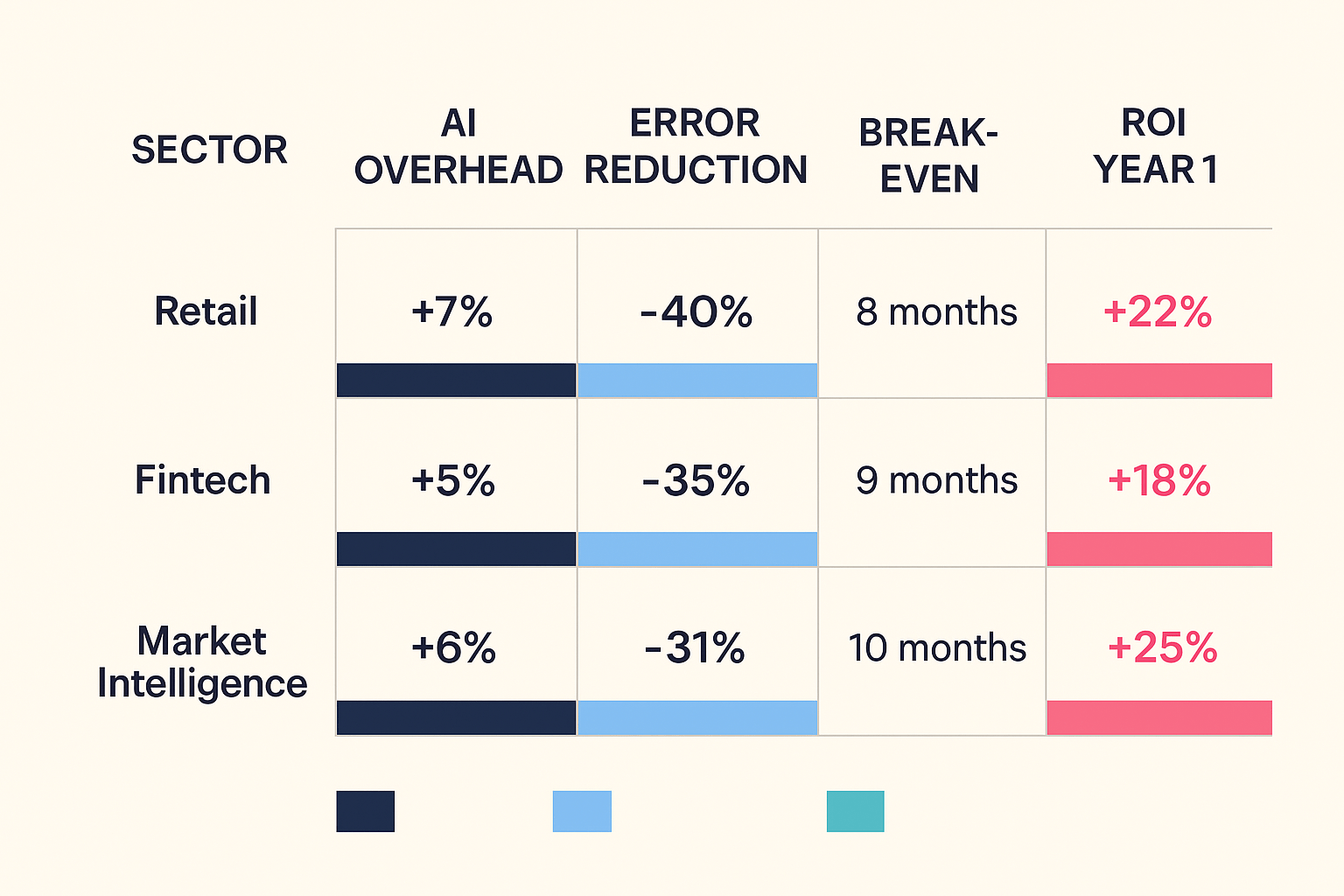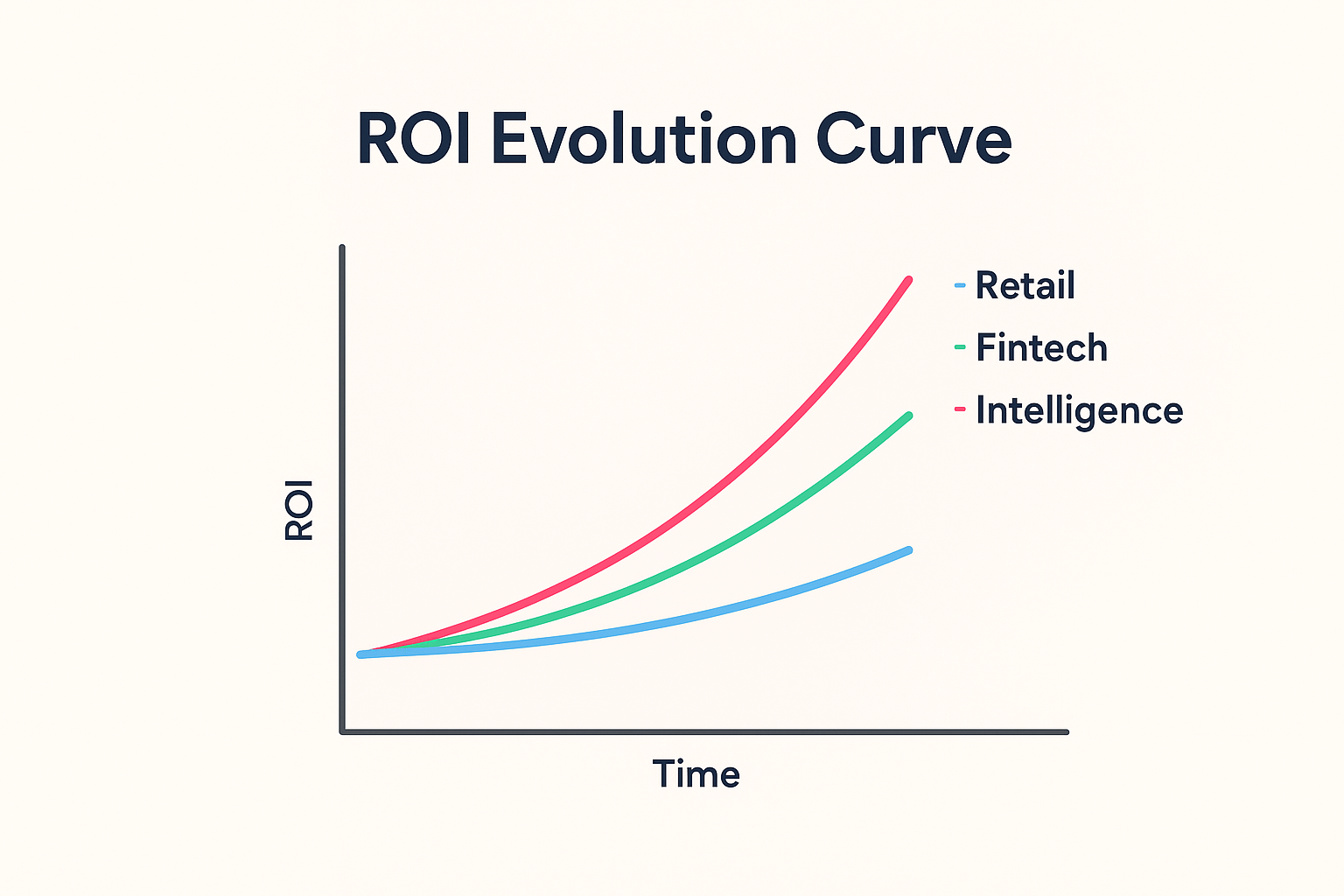AI Scraping, machine learning web scraping, and intelligent data extraction are revolutionizing how businesses collect information in 2025.
Unlike traditional methods, these automated systems combine predictive analytics to deliver measurable ROI within weeks.
This guide reveals implementation strategies, real cost comparisons, and AI-driven data collection.
The integration of machine learning, automation, and predictive analytics is redefining how companies obtain, interpret, and monetize information. At Scraping Pros, we approach each project with a clear focus: show incremental value in less than 15 days, combining intelligent automation with measurable business objectives.
1. Real-Time Intelligent Data Extraction, Not Futurism
The future isn’t about promises, but about results.
By 2024, more than 60% of AI-based projects failed before reaching production. The main reason: unrealistic expectations and a lack of focus on concrete metrics.
That’s why our projects begin with discovery, MVP, and rapid monetization, always measuring impact from day one.
| Objective | Approach | Outcome |
|---|---|---|
| Align business and data | 5–10 days of discovery | Clear KPIs and defined quick wins |
| Launch an agile MVP | Actionable dataset | Early validation of value |
| Scale with control | Predictive automation | Sustainable ROI |
Real Example:
An e-commerce platform needed price tracking in 15 markets. With intelligent automation and adaptive change detection, we reduced errors by 42% and doubled the update frequency.
LATAM Case:
A retail startup in Brazil implemented automated systems to forecast demand by region. The model achieved 91% accuracy in anticipating stockouts.
“Intelligence isn’t about extracting more data, but about anticipating when the data is no longer useful.”

2. What Nobody Tells You About AI Scraping
It isn’t magic. It’s a balance between technology, cost, and stability.
Language Models (LLMs) like GPT-4 or Claude interpret complex pages with great accuracy, but they are still expensive and variable.
Our Benchmarks:
- Claude achieved 87% success rate on structured tasks
- GPT-4 excelled at semantic understanding
- Traditional parsers (XPath, Regex) are still 900× cheaper when the site structure is stable
The Smart Strategy:
- Use AI-driven parsing for dynamic sites or with JS
- Keep traditional scrapers in predictable contexts
- Combine both in a hybrid architecture
Example:
A travel comparison site implemented predictive layout change detection, reducing maintenance costs by 73%.
A digital insurer used intelligent automation to unify more than a thousand document formats into a single pipeline.
“Intelligent scraping doesn’t replace automation; it trains it.”

3. Technologies With Real 2025 Traction
Not all hyped technologies have real impact. At Scraping Pros, we developed our own index—Hype vs. Readiness 2025—that measures performance, cost, and adoption maturity:
| Technology | Hype | Readiness 2025 | ROI Trend | Recommendation |
|---|---|---|---|---|
| Metaverse Scraping | 8/10 | 3/10 | −$40K average | Experimental |
| AR Data Layer | 6/10 | 4/10 | +23% in retail | Controlled pilots |
| IoT Sensor Scraping | 5/10 | 7/10 | +340% in logistics | Invest |
| Voice Data Extraction | 7/10 | 5/10 | +89% in research | Moderate use |
| Blockchain Scraping | 6/10 | 6/10 | Variable | Case-by-case analysis |
LATAM Example:
A logistics company in São Paulo integrated IoT data and urban traffic APIs to anticipate delays. It managed to reduce idle time by 28% and fuel consumption by 19%.
Global Example:
European research firms use voice data extraction to study sentiment in political podcasts. An application that combines NLP, automation, and behavioral analysis.
4. The Real Economics of AI Scraping and Smart Data Collection
Integrating AI doesn’t always reduce immediate costs, but it does transform long-term returns.
Our internal data shows that these systems cost 6–8% more upfront, but reach break-even in less than 10 months.

Case Study:
A global retail chain applied predictive intelligence to anticipate competitors’ price drops. In nine months, it achieved over USD 240,000 in additional revenue.
Insight:
CFOs no longer measure scraping by data volume, but by time to real value (Time-to-Value).

5. Time-to-Value: The Metric That Defines Success
| Phase | Duration | Key Result | Impact |
|---|---|---|---|
| Discovery | 5–10 days | Defined KPIs | Strategic alignment |
| MVP | 15–20 days | First actionable dataset | Early validation |
| Monetization | 30–45 days | Impactful decisions | ROI visibility |
| Scale | 60–90 days | Positive ROI and complete documentation | Operational maturity |
Our delivery framework ensures that each project shows value in less than 15 days, building trust between technical and financial teams.
6. Predictions No One Else Will Make
Contrarian Take 1: Most Should Not Adopt AI Scraping in 2025
While the entire industry pushes these technologies, our honest prediction: 60% of companies currently considering migration should NOT do so in 2025. Why: ROI isn’t there if your selectors are stable. We expect to see a wave of “migration regret” in 2025 when companies realize they spent $40K-$80K without material improvements.
Verification: We will track client retention rates and satisfaction scores specifically for AI-powered vs. traditional scraping clients.
Contrarian Take 2: Metaverse Scraping Peak Was 2024
All the hype is about “metaverse is coming.” Our prediction: 2024 was the peak of metaverse scraping interest. 2025 will see a 30-40% decline in inquiries. Why: Reality check is hitting, enterprise pilots are failing, ROI is not materializing.
Verification: We’ll compare inbound leads mentioning “metaverse scraping” in 2024 vs. 2025.
Contrarian Take 3: Traditional Proxies Will Make a Comeback
As the industry pivots to “smart proxies” and “AI-powered routing,” we predict that simple residential rotating proxies will regain market share in 2025. Why: Smart proxies add 40-60% cost overhead that many projects can’t justify. When LLM costs drop, companies will cut back on premium proxies first.
Verification: We’ll track the mix of proxy types among our own clients and ask competitors in conference calls.
Closing — The Advantage of Thinking Like Humans in the Data Age
AI can learn, but it can’t yet understand the business context like humans. That’s the difference between a tool and a strategy.
“At Scraping Pros, we believe that data isn’t valuable because of its volume, but because of the decisions it enables you to make. The true value of intelligent scraping lies in how it connects information with purpose.”
— Business Web Scraping Specialist Team, Scraping Pros
FAQs — AI Scraping and Intelligent Data Extraction (2025)
1. What is AI Scraping?
It’s the combination of automation and machine learning to extract and interpret web data dynamically. Unlike traditional methods, these systems adapt automatically to site changes.
2. What’s the difference between predictive and traditional scraping?
Predictive methods anticipate changes before they break the process, reducing maintenance and downtime. Traditional scraping requires manual fixes after each site update.
3. Is automated web scraping legal?
Yes, automated web scraping is legal if it complies with privacy regulations and terms of service (e.g., GDPR or regional LATAM frameworks).
4. Which industries use AI scraping the most?
Retail, finance, travel, and research industries lead in adoption—especially where fast decision-making matters.
5. How long does it take to get results with AI scraping?
Between 15 and 90 days, depending on scope and data complexity. Our Time-to-Value framework shows initial results in less than 15 days.
6. Where is adoption growing fastest?
In North America and Europe, with strong momentum in LATAM fintech and e-commerce sectors using intelligent extraction methods.

